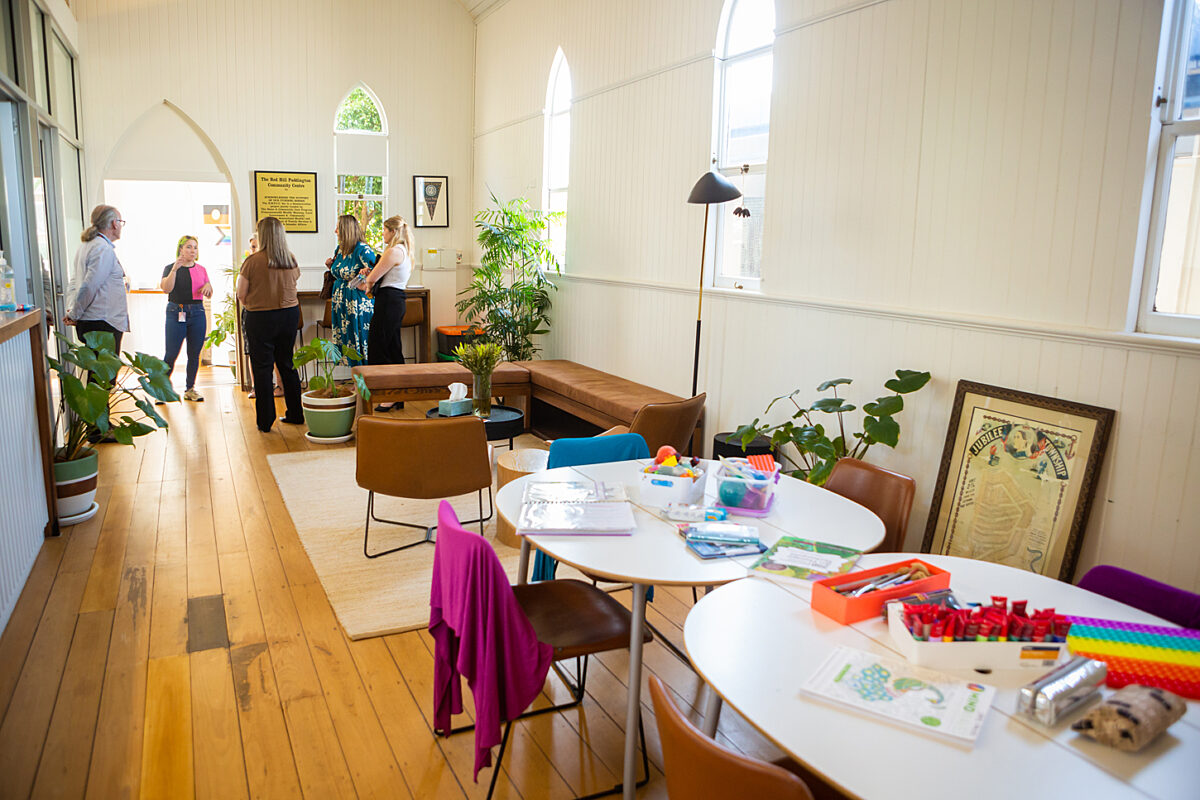Safe Spaces: connecting our community to non-clinical emotional supports
24 May 2023Safe Spaces are inclusive, welcoming and supportive environments for people experiencing emotional distress. They use a peer-led workforce to provide appropriate, reliable and non-clinical supports and promote warm connections at accessible, walk-in locations.
Brisbane North PHN’s Mental Health, Alcohol and Other Drugs program team have been engaged with Nous Group to evaluate the 2021–2024 iteration of the Brisbane North Safe Space Network.
In its entirety, the program evaluation will seek to understand (over three years, up to December 2024) the contextual landscape around Safe Spaces, its outcomes, impacts, and opportunities for successfully sustaining it into the future. This interim report, informed by engagement with Safe Space providers, program documentation and quantitative service data, presents early insights.
Specific Safe Space models meet local needs, in alignment with peer-led co-design principles. While fundamentally the mission is the same, no two spaces are identical. As evidenced in the preliminary review, there is a need for clearer guidance around the overarching service model, which will support better messaging and better reach to people in distress.
Identifying and ensuring access to these people, when and where they need it, is critical. Repeat visitors constituted a significant proportion of service activity, which speaks to the value and the community need for spaces like these, as well as gaps in the available supports.
Demand for the program was strong from the outset and increased over time, with a majority (86 per cent) of this cohort showing an improvement in distress levels between the start and the end of their visit.
In light of these findings and early successes, there are four ways we are working to improve Safe Spaces:
- Strong foundations for continued outcomes and growth: iteratively develop Safe Space service guidelines to promote consistency of service over time.
- Walk the talk: the important peer work undertaken at Safe Spaces is intensive and workforce structures – including expanded and standardised training and supports which recognise and respond to this intensity – need to accommodate for this going forward to ensure continued, quality delivery.
- Provide continuity of safe care: including improved consistency in quality and safety, and the development of longer-term models of care for repeat guests.
- Ensure good governance and structure: to promote interaction and sharing of insights across all roles.
Read the Safe Spaces Evaluation Progress Report. The PHN looks forward to maintaining the strong progress and success of our Safe Space Network to date, and bringing you further updates in December.

